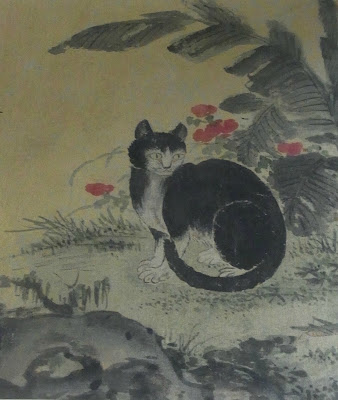Rain fell for 15 hours, and the coldest day in a week was upon us. If Sluggh were made of brown sugar, this might have been an issue.
Seongbuk is a district stretching into the hills on Seoul's north side. Ritzy private residences line narrow streets, the sidewalks come and go, and $7 cups of coffee are a staple. The Polish and Portuguese ambassadors live here, and the mountains' mist cloaks Buddhist temples and churches alike.
The Seongbuk-Dong Parish Church:
One out of five Koreans identify themselves as Christian, making Christianity the biggest organized religion in the country. I'm not sure this is a meaningful statistic, however. What's a religion, anyway? Korean shamanists (mostly women) seem almost druidic, summoning spirit forces found in nature. And my incomplete understanding is that they and other animists are tied up in precepts of Buddhism, which seems more like a philosophical framework for viewing the world bundled with ethical beliefs about how one should live one's life.
And then there's Confucianism, which I know nothing about but probably doesn't fit the definition of a religion, as the word is popularly understood. While Christianity may predominate by default and Koreans' private lives are their own, my sense is that Korea is a mostly secular place, especially in the Seoul megalopolis.
Further up the hill is the Gilsangsa Buddhist Temple. A former Korean
gisaeng, an entertainer of wealthy men similar to a Japanese geisha, owned a restaurant on this site and donated the whole parcel to a monk 25 years ago.
You're free to quietly wander around. Silence is sterling here -- I think these folks are trying to shut down their internal dialogues and tap into something else.
A path along a trickling creek. Pretty and peaceful. A handful of Japanese tourists were here.
Residences and meditation rooms.
Shared cups for drinking.
I feel fortunate to be able to visit the Gansong Art Museum, which is open only about four weeks of the year, in May and October. I would not be surprised if many Seoulites were not aware of the museum's existence, but enough do to make for a 40-minute wait. Peafowl cry out while the line shuffles forward.
This astonishing exhibit is housed in just two rooms, one upstairs and down. Korea was largely stripped of its art treasures during the Japanese colonial period (1910-1945), but one art collector, Jeon Hyeong-pil, was able to save these masterworks. I wish I knew how -- sounds like it would make a great movie.
I can't read Chinese or Hangeul, and there are no translations or headsets, so the artists are a mystery to me, not that their names would be personally meaningful. Everything below is from the 18th century. A milling woman:
Simple, dynamic brushstrokes, with unpainted areas enhancing the painted ones.
We in the West don't really have a term for this use of negative space, though it's not a foreign concept. Musical silences give form to Western music, and pauses are important in our theatrical arts. Wasteful language is thought to be an enemy of good writing. Hell, even comic strips have gutters between the panels. I just don't think we've internalized the "whys" of this kind of restraint the way the Asians have.
Photography is not allowed. Here's my take on that, and maybe I'm rationalizing, but if my camera is in discreet mode, with no flash and no sound, and I do my cropping at home and don't distract other patrons, I feel I'm part of the solution. If everyone acted thusly, these restrictions wouldn't be necessary. It's like safely rolling through a stop sign at 3 a.m. after having looked in both directions. The monks might have a different view, but I doubt it. The Christians on the other hand ... oy with the rules!
A falconer on horseback, with a dear deer friend. The horse's dipping head, at this moment in his gait, is spot-on. Jane Clark will back me up on this.
Now I'm hungry.
Outside, I climb a narrow passageway and spy a 14th-century fortress wall (top of picture). Pretty amazing engineering, given the terrain.
Preposterously good-looking muffins on the subway.
And, of course, the late-afternoon crush.
I haven't seen another Westerner all day. Tomorrow, I set foot in the Hermit Kingdom. But first I must sign a disclaimer stating that I understand I may be killed.
Gamsong Museum of Art
Hours: 10-6, only in May and October; exhibits rotate.
To get there: Climb the steps of Exit 6 at the Hansung
University subway station, continue in the same direction,
past the food stalls on your right, for about 15 minutes,
till you see a sign pointing to the right saying "Gamsong
Museum of Art, 60m."
No photography allowed.
The guards walk in circles; you can see them in the
reflection of the display cases. Just don't be a doosh.
Admission: free!

















I can't believe that was free; awesome! Good use of "peafowl." Did you have a muffin?
ReplyDeleteI'm not a muffin guy, but damn, I might have to break down.
ReplyDelete